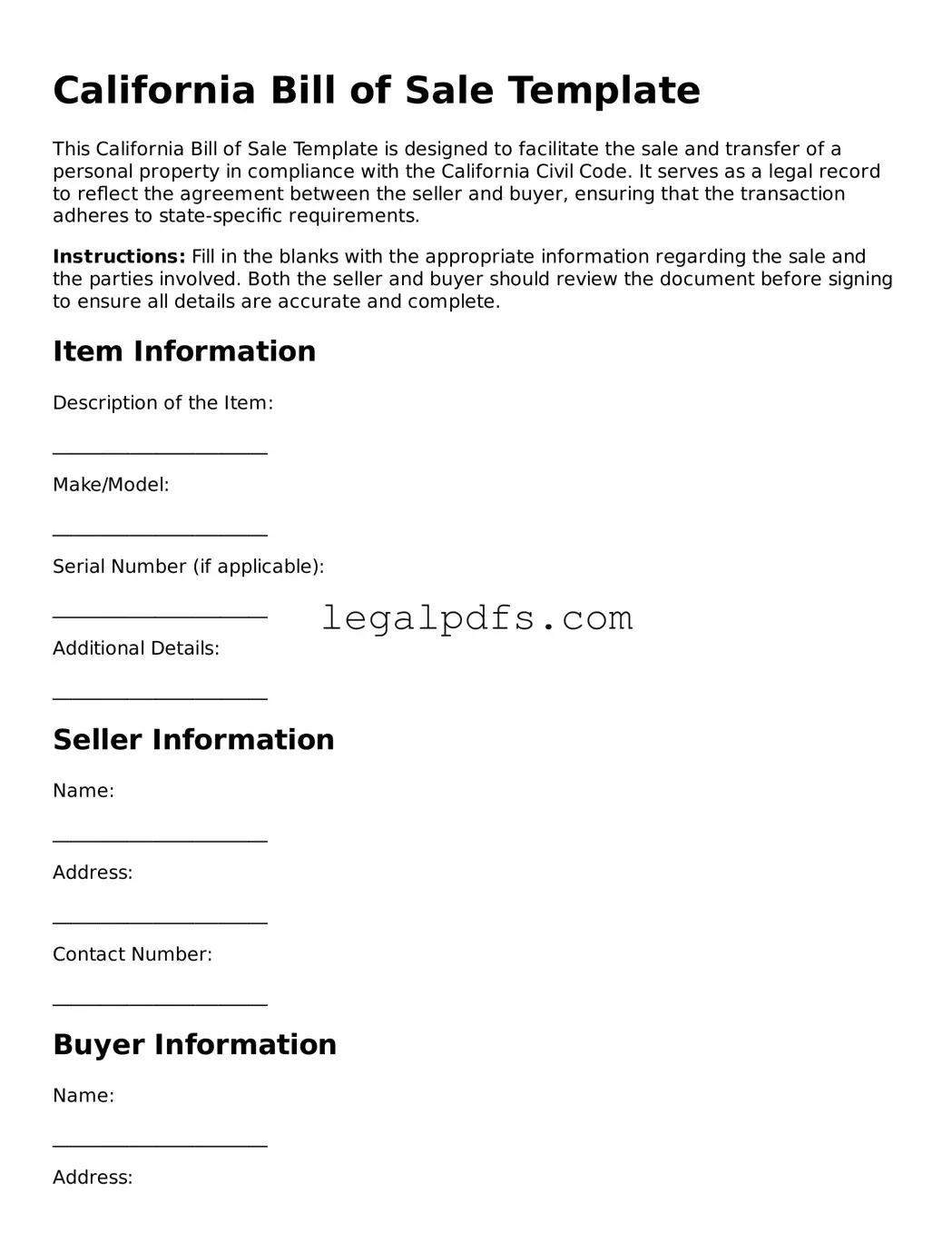What is a California Bill of Sale?
A California Bill of Sale is a legal document used to record the transfer of ownership of personal property from a seller to a buyer. It serves as proof of purchase and documents the specific details of the transaction, including a description of the item sold, the sale date, and the agreed-upon purchase price. In California, bills of sale are commonly used for private sales of vehicles, boats, motorcycles, and other valuable personal items.
Is a Bill of Sale required in California?
In California, a Bill of Sale is not always required by law for private transactions, but it is highly recommended. For vehicles, the Department of Motor Vehicles (DMV) recommends using a Bill of Sale, along with the title transfer and release of liability forms, to document the sale. It provides legal protection for both the buyer and the seller should any disputes or questions about the transaction arise in the future.
What information should be included in a California Bill of Sale?
A thorough California Bill of Sale should contain the following information: the names and addresses of the seller and the buyer, a detailed description of the item being sold (including make, model, year, and serial number if applicable), the sale price, the date of sale, and signatures from both the buyer and the seller. It’s also beneficial to include any additional terms of the sale, such as "as is" condition statements.
Do I need to notarize a Bill of Sale in California?
No, California does not require a Bill of Sale to be notarized for most personal property sales. However, having the document notarized can add an extra layer of protection for both parties involved in the transaction. It verifies the identity of the signatories and can help prevent fraudulent claims in the future. For certain transactions, like selling a vehicle, other forms might require notarization per DMV requirements.
How does a Bill of Sale protect the seller?
A Bill of Sale protects the seller by providing a documented record of the transaction, stating that the item was sold "as is" or with a specific condition agreed upon by both parties. It should clearly state that the buyer accepts the item in its current condition, limiting the seller's liability for any future claims about the item’s condition. Additionally, by documenting the transfer of ownership, it releases the seller from legal responsibility for what the buyer does with the item after the sale.
